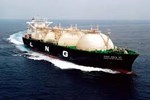Current studies show that liquefied natural gas (LNG) is the fastest growing fossil fuel and will most likely account for almost 90 percent of the projected growth in long-distance gas trade until 2040.
The investment needed to drive such an expansion of the international gas & LNG industry could reach as high as USD $9 trillion over the next 20 years. During this time period, technical advances for the market place are also expected to rise. The three biggest trends, according to oilandgastechnology.net, are:
1. The Industrial Internet of Things (IoT)
- The increasing connectivity of online devices is allowing for better decision-making and bringing key information from all over the industry directly to the people in the field who need it most.
- • An example of this, is the partnership between GE and Technip. In 2016 the two companies began exploring and expanding digital solutions for LNG. The two companies began work together to evaluate the application of digital solutions for the engineering, construction, commissioning, startup and operation of LNG facilities.
2. Enhancing safety measures
- Health and safety continues to be a vital priority for the oil and gas industry.
- In January 2017, the Dunkerque LNG terminal in France entered into commercial operations and accounts for more than 20% of French natural gas demand.
- Safety and security of both people and assets were taken into account during the initial design of the terminal.
- Scope of the work included the implementation of different innovative safety features: collected safety valves, LNG collection channels, automatic actions and frangible domes in case of tanks over-filling.
3. Accelerating industrial demand for natural gas through equipment innovation
- Innovations in the oil & gas sector have steadily accelerated natural gas markets around the world.
- New technologies have emerged in drilling, completions, and production for unconventional and conventional resources, further reducing the breakeven costs of natural gas production.
- One such emerging technology is the automatic monitoring of steam traps. This latest industry innovation has the potential to have a significant impact on natural gas usage, efficiency and emissions.


